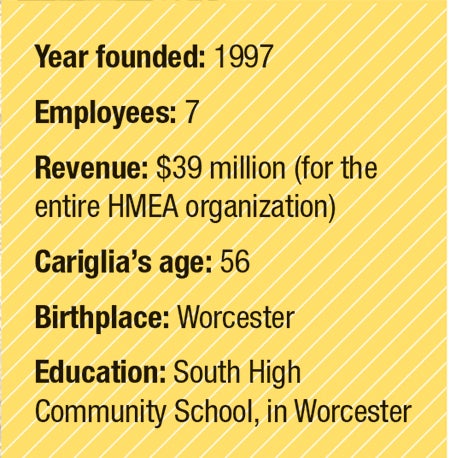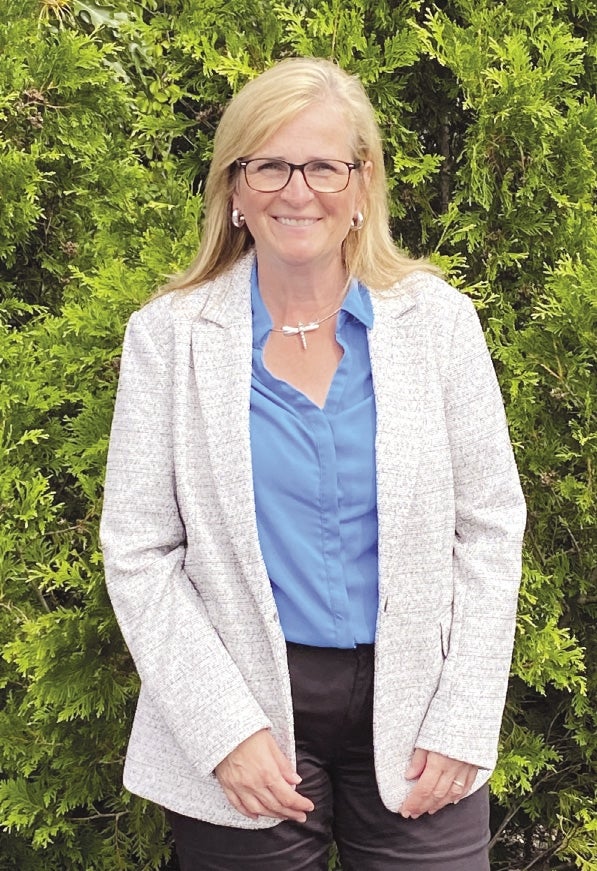Kristen Cariglia first joined HMEA more than 19 years ago, moving over to the developmental disability services nonprofit’s Autism Resource Central division 16 years ago.
Get Instant Access to This Article
Subscribe to Worcester Business Journal and get immediate access to all of our subscriber-only content and much more.
- Critical Central Massachusetts business news updated daily.
- Immediate access to all subscriber-only content on our website.
- Bi-weekly print or digital editions of our award-winning publication.
- Special bonus issues like the WBJ Book of Lists.
- Exclusive ticket prize draws for our in-person events.
Click here to purchase a paywall bypass link for this article.
Kristen Cariglia first joined HMEA more than 19 years ago, moving over to the developmental disability services nonprofit’s Autism Resource Central division 16 years ago. She was promoted to director of operations in 2019 and assumed the role of director in June, taking over Susan Loring, who retired after leading the center for more than 20 years.

How has the leadership transition gone?
It is going well. I worked with Sue for several years, and I’ve been here at the center for 16 years, so I grew into the center. As things have progressed over all those years, particularly with insurance paying for autism services, the center has evolved.
The center now serves 64 towns in Central Massachusetts, with some 4,000 families registered for services here. When I first started at the center, we served less than 1,000 people.
Now with COVID-19 and entering the post-COVID world, we will keep some things the same, but we will also evolve to the new needs of our families.
What challenges has COVID caused?
For families, a lot of them have their kids home for remote learning, which is terribly straining on the parents. They are now moving their kids back to school, but they are hesitant with everything going on. We are now helping families communicate with their school districts, on getting those services back to where they were.
The kids lost a lot of time for school and therapy services. For kids on the spectrum, time is important.
Part of what makes this center so great is it connects families together with other families who have children on the spectrum, so they all learn a lot from each other.
How does the center help the families?
We are an information and referral center. We assist families with accessing MassHealth, Social Security, services from the Mass. Department of Development Services. We do community outreach and workshops. We help families find service providers, like barbers, who are used to dealing with kids on the spectrum.
We serve some adults, too, those who have autism but don’t have a disability. Those groups run a little bit differently. Some come to the center in their 60s and are newly diagnosed.
How are you funded?
We are half funded by the Department of Development Services, and the rest is fundraising and grant funding. The Saint Gobain Foundation just gave us $10,000 for a robotics camp for four weeks over the summer. It was so successful, the foundation gave us $25,000 more for the next two years. We will have a Saint Gobain STEM lab, which will have loaner equipment for the students.
As director with small staff, my primary responsibility – other than running the center – is fundraising and community connections. We’ve only been in the Worcester location for the last three years. Before that, we were in West Boylston, so I am still reaching out and letting people know we are here.
I’m sure there isn’t an employer out there with at least one person on their staff who is impacted by autism, whether it is their children, another relative, or the employee themselves. We do training on how to interact with coworkers who have autism.
How has COVID changed the center?
Right away when the pandemic started, we switched to virtual work easily, but lost a lot of in-person interaction, which is so important for a lot of these families. We will keep it virtual for a little while longer, and then will probably transition to a hybrid situation.
During COVID, we had 50,000 contacts here: phone calls, emails, texts, etc. We are a very small staff. The need is there. Sometimes a family will reach out for simple things, like getting the time of an event on the weekend. Or we get a call from a family besides themselves, because maybe they found out their insurance doesn’t cover autism services. That number of contacts is huge.
How is the center impacted as more people are being diagnosed with autism?
That is the piece we are preparing for. The children who are aged 5 or 6 now are going to grow up. The transition for some people will be different. Some will have to live in supported living. Some may go into the workforce. Some will need secondary education.
We are seeing an increase in numbers, particularly with the new addition of adults who are autism only. In a couple of years, that number rose from 1 or 2 to close to 500. And there is a huge number of folks we haven’t connected to yet. These people never really had any supports before and don’t know they have access to them. That is why we are trying to make ourselves known.
Editor’s Note: WBJ Editor Brad Kane, who conducted this interview, has four children diagnosed with autism spectrum disorder.

